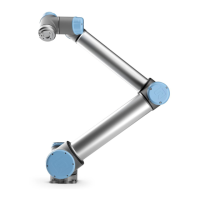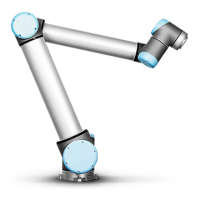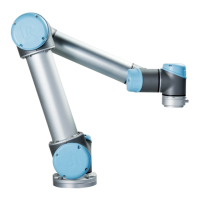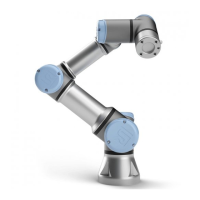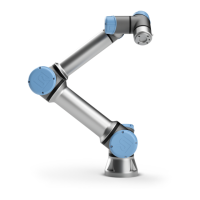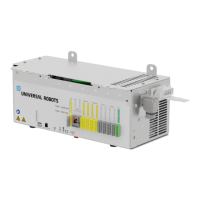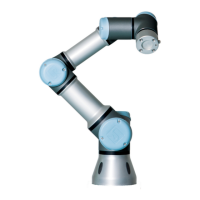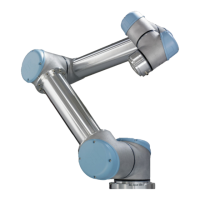9.1. Pose Editor Screen
Description Once you access the Pose Editor screen, you can precisely configure a
target joint positions, or a target pose (position and orientation) for the TCP.
Note: This screen is offline and does not control the Robot Arm directly.
Robot The 3D image shows the current Robot Arm position. The shadow shows
the Robot Arm target position controlled by the specified values on the
screen. Press the magnifying glass icons to zoom in/out or drag a finger
across it to change the view.
If the specified target position of the robot TCP is close to a safety or trigger
plane, or the orientation of robot tool is near the tool orientation boundary
limit (see Safety PlanesModeson page147), a 3D representation of the
proximate boundary limit is shown. Safety planes are visualized in yellow
and black with a small arrow representing the plane normal, which
indicates the side of the plane on which the robot TCP is allowed to be
positioned. Trigger planes are displayed in blue and green and a small
arrow pointing to the side of the plane, where the Normal mode limits (see
5.5. Software Safety Modes on page135) are active. The tool orientation
boundary limit is visualized with a spherical cone together with a vector
indicating the current orientation of the robot tool. The inside of the cone
represents the allowed area for the tool orientation (vector). When the
target robot TCP is no longer in proximity of the limit, the 3D representation
disappears. If the target TCP is in violation or very close to violating a
boundary limit, the visualization of the limit turns red.
UR16e 330 User Manual
Copyright © 2009–2024 by UniversalRobotsA/S. All rights reserved.
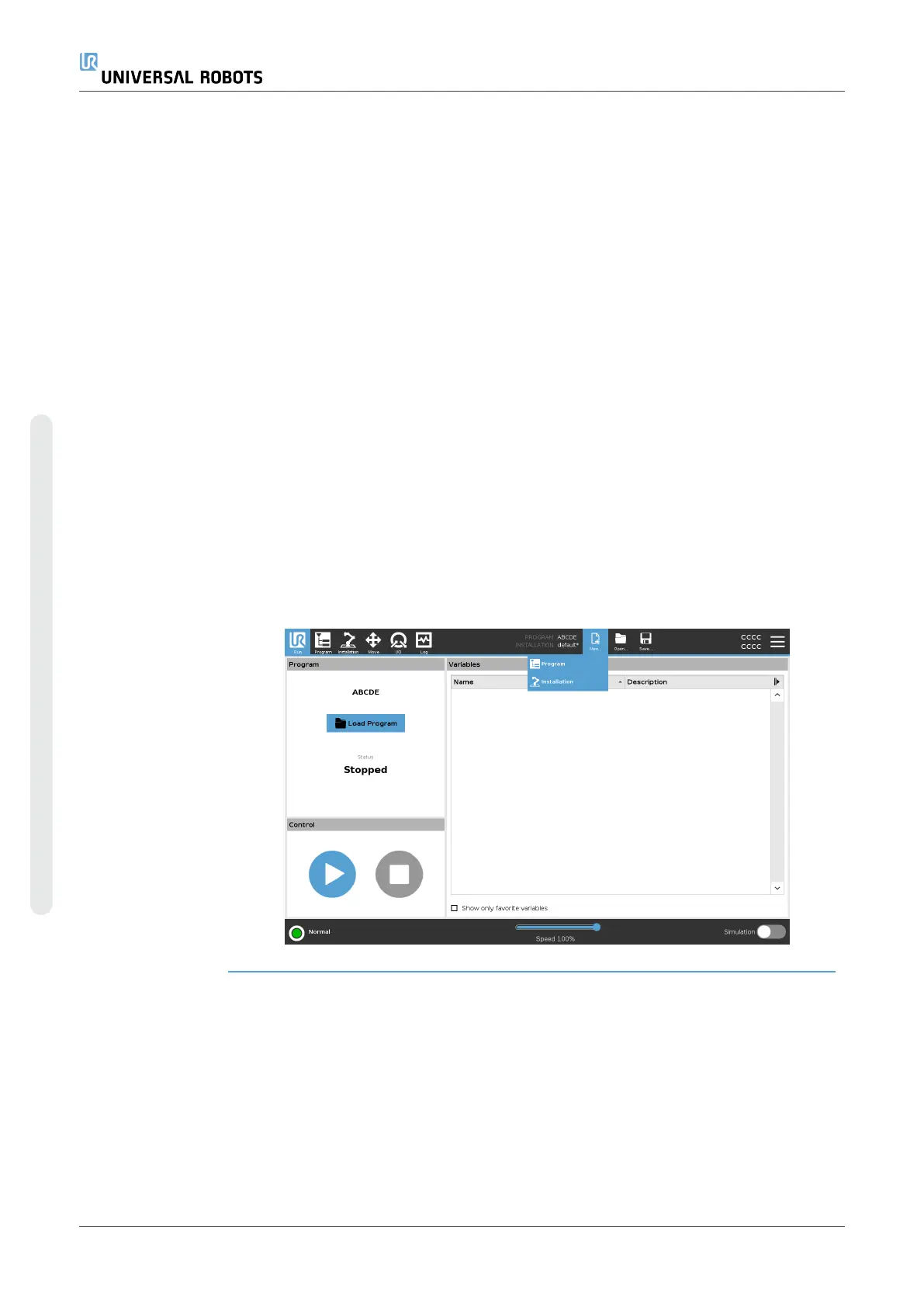